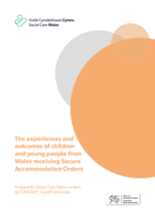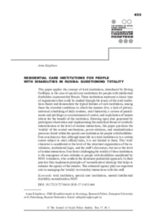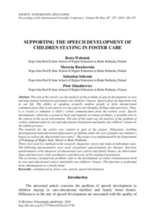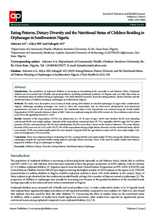Displaying 551 - 560 of 1508
This summary report presents key findings and recommendations from an analysis of unregistered, private children's homes in Thailand's Sangkhlaburi District.
This dissertation study aimed to describe and understand adolescent girls’ subjective experiences of life in an after-care facility after transitioning out of institutionalized care in Delhi, India.
This briefing paper reports on the lessons learnt from a process evaluation of the child protection component of the Global Fund’s Young Women and Girls (YWG) programme, a multi-pronged HIV prevention programme targeting young women and girls implemented in 10 districts in South Africa.
This study investigated the experiences of the cohort of young people from Wales receiving secure orders between 1 April 2016 and 31 March 2018.
This paper applies the concept of total institutions, introduced by Erving Goffman, to the case of special care institutions for people [including children] with intellectual disabilities in present-day Russia.
The aim of the article was the analysis of the problem of speech development in care and educational institutions and family-run children’s houses in Poland.
This companion paper provides a snapshot of current practice of therapeutic residential care services conducted in Australia.
This thesis is concerned with the overrepresentation of black and minority ethnic (BME) children and looked after children, in the youth justice system in general and the secure state in particular, in England and Wales.
The objective of this paper is to examine the situation of orphans and vulnerable children (OVC) in Dar es Salaam, Tanzania in existing alternative care systems and explore the treatment of OVC in these systems.
This study aimed to assess the eating patterns, dietary diversity and the nutritional status of children residing in orphanages in southwestern Nigeria.








